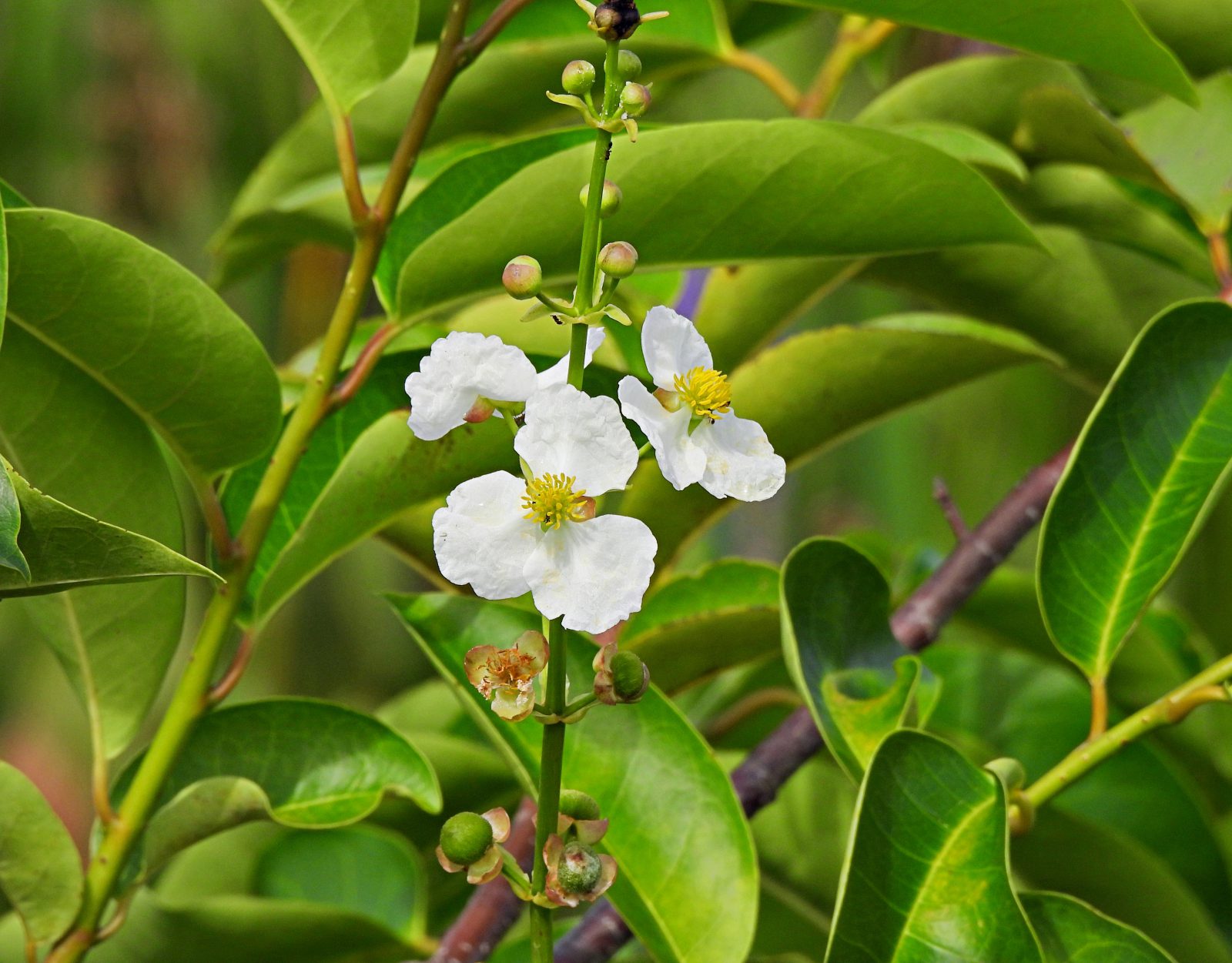
The Guide to Florida's Aquatics Plants: 10 Species Found In Florida
Florida is home to hundreds of native aquatic plants that add unique, colorful beauty around HOA communities, golf courses, and other properties, bringing joy to all who spend time around the water. Unfortunately, Florida is also home to unwanted aquatic visitors; invasive species are a growing threat to the unparalleled ecosystems that the state is known for. And with freshwater, brackish water, and saltwater spread among lakes, ponds, marshes, wetlands, streams, and many other aquatic habitats, there is a lot of plant variety. Understanding which species are native and which are invasive is important to preserve the health of these waterbodies and ensure Florida’s cherished aquatic ecosystems can be appreciated for generations to come.
Discover Native Aquatic Plants in Florida:
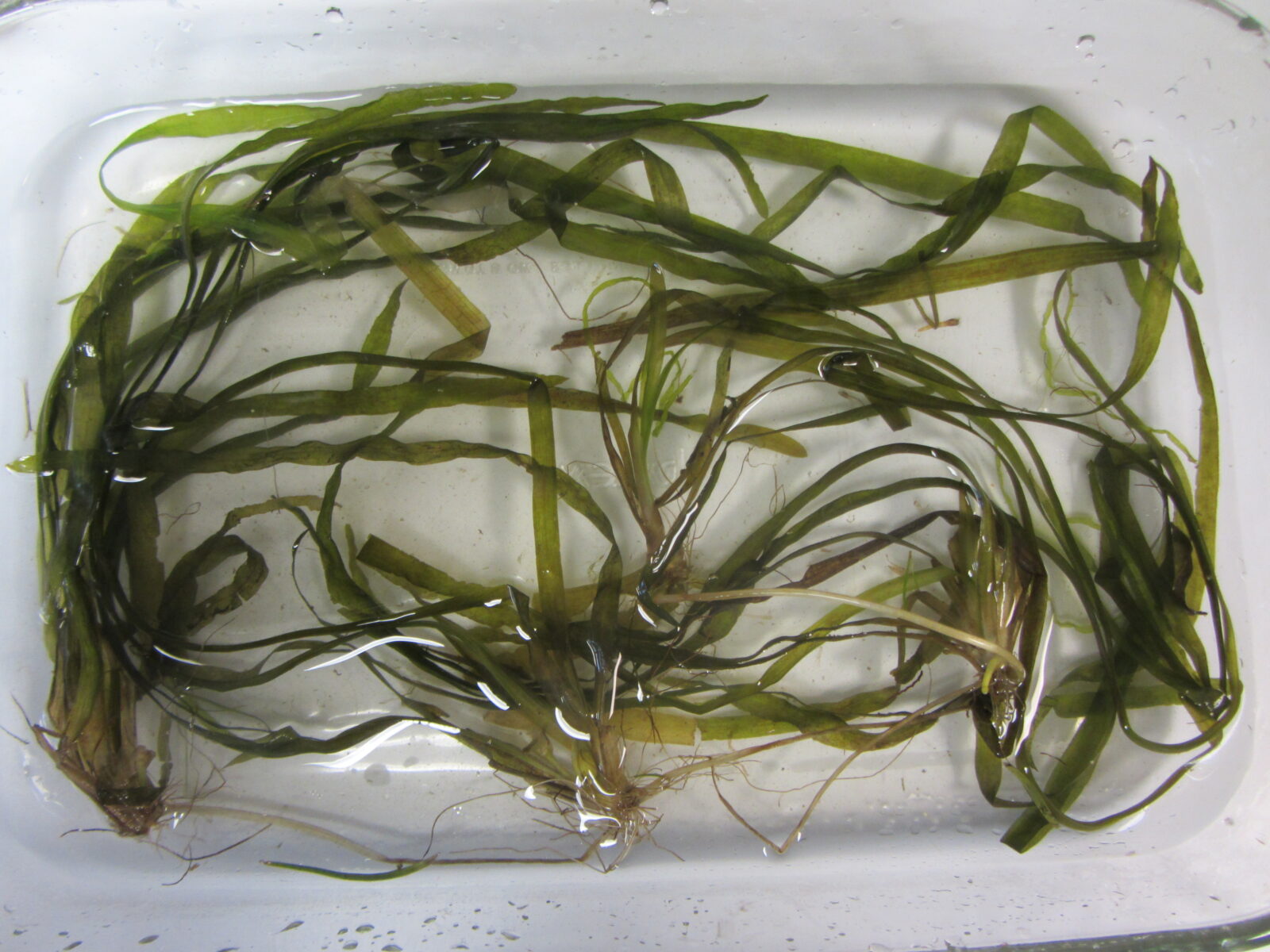
What is Tape Grass?
Tape grass or Vallisnerai american is a submersed (fully underwater) aquatic plant found throughout many clean, clear Florida lakes, rivers, and natural springs. It creates underwater meadows for fish, turtles, and other native animals to feast on.
- Appearance: Tape grass looks how it sounds – like long, thick blades of grass growing underwater. Its individual blades are about an inch wide and can grow to be several feet long with round tips and raised ‘veins’ running its length. In shallower waters, it often ‘bends’ to meet the current, earning it the nickname of ‘eel grass’.
- Watch Out: As tape grass grows vertically and quite long, it can sometimes become a swimming and recreational use hazard – or at least alarm swimmers whose legs get tangled.
- How to Control Tape Grass: Though tape grass is native, property owners who wish to reduce its growth can find success with EPA-registered aquatic herbicides applied by a licensed professional, or by dyeing the waterbody with natural pigment to block out some of the sunlight, limiting plant growth.
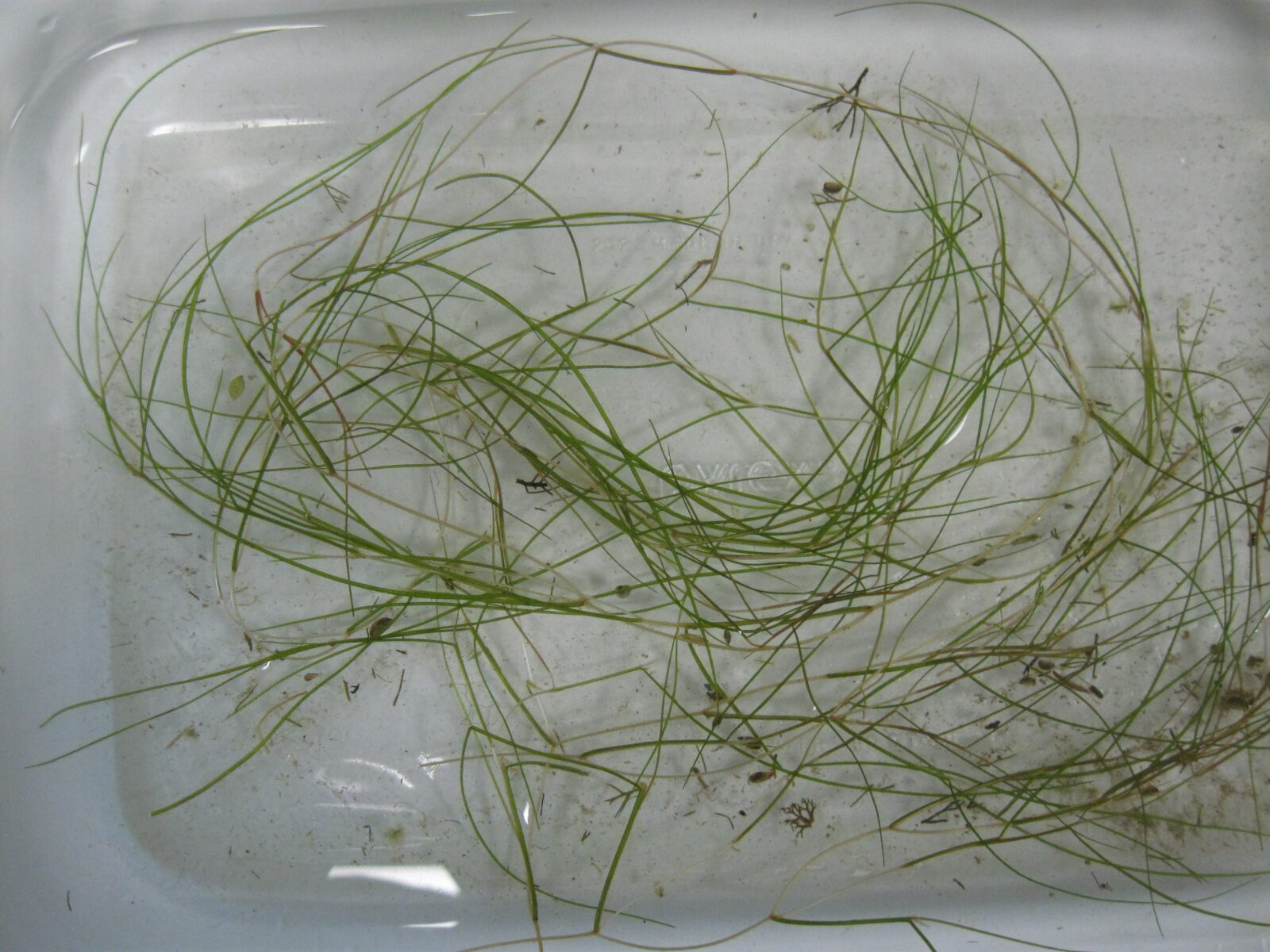
What is Sago Pondweed?
Sago pondweed or Stuckenia pectinata is another submersed aquatic grass that grows in shallower waters (both fresh and brackish) that tend to be stagnant and slow-moving – often ponds, marshes, and spring-fed rivers.
- Appearance: Sago pondweed’s stems are about an eighth of an inch thick and very flexible. They can grow several feet with long, narrow tapered leaves protruding from them. Its stems have many branches that usually have a base color of green, tinged with browns and reds. It also has tiny, spikey flowers that are greenish with several whorls.
- A Good Food Source: Sago pondweed is usually a great plant to have in a lake or pond. It contains an ample amount of nutritious food sources for fish, birds, and waterfowl thanks to its tubers, seeds, leaves, stems, and roots.
- How to Control Sago Pondweed: Those who wish to remove this plant can try to manually rake it out of the waterbody, but it is very likely to re-establish due to its many ribosomes, roots, and seeds. EPA-registered aquatic herbicides applied by a licensed professional tend to provide the safest, most efficient results. For a more natural, long-term solution, sterile grass carp can also be stocked. These voracious eaters can quickly feed on sago pondweed, but may also consume plants that are intended to remain.
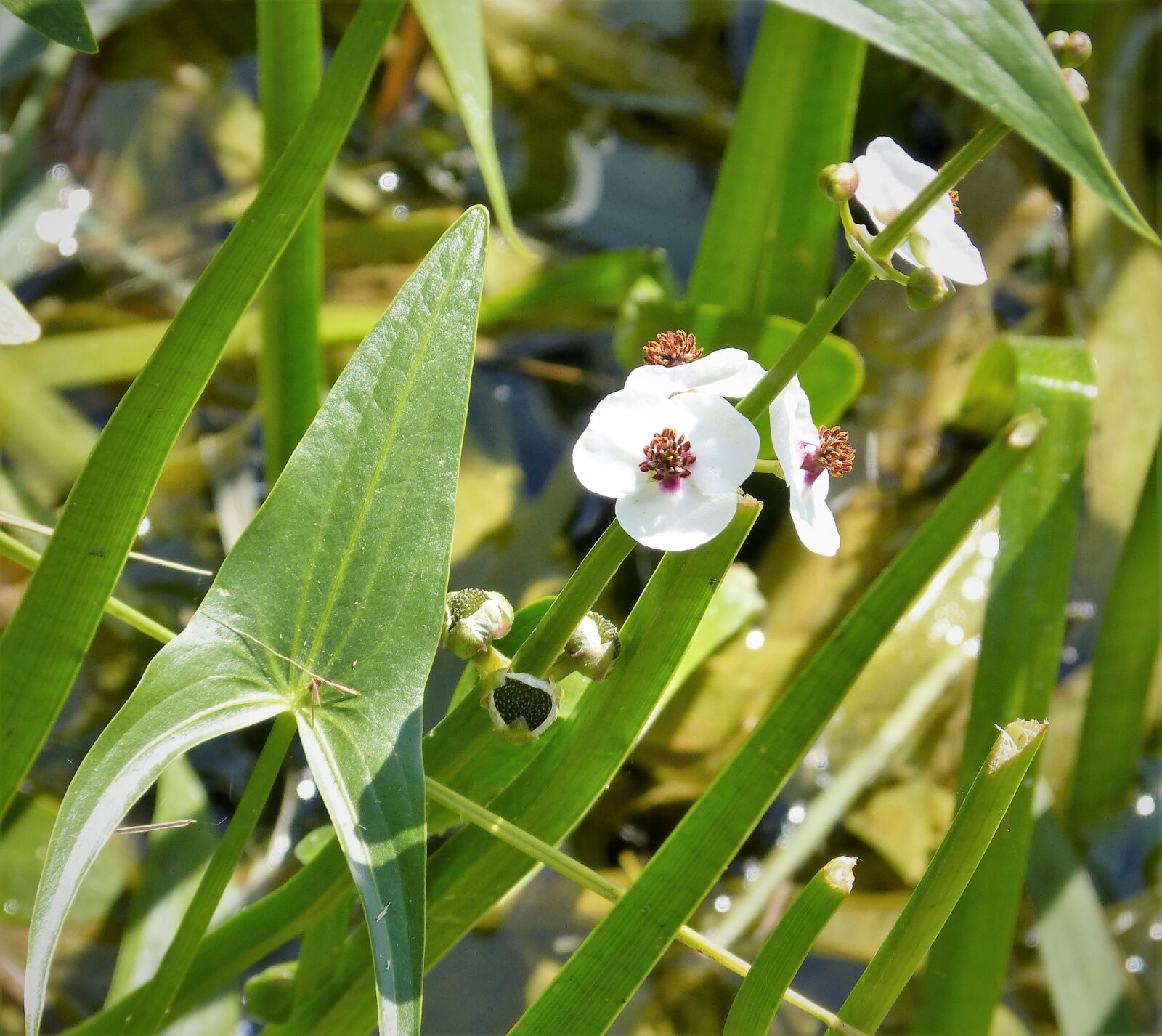
What is Duck Potato?
Duck potato or Sagittaria lancifolia gets its name from the large, tuber-shaped underground stems. Duck Potato can be found growing in swamps, ditches, lakes, and streams across Florida.
- Appearance: Duck potato grows from the bottom layer of the waterbody to about three feet above the surface. It has long petiole leaves that are arrow-shaped and small clusters of flowers with three petals.
- Nutritious: Duck potato’s starchy tubers aren’t just eaten by waterfowl and muskrats, they were also once a source of nutrition for Native Americans, who called it ‘Wapato’.
- How to Control Duck Potato: For the most part, duck potato is helpful for nutrient absorption, erosion control and aquatic habitats and doesn’t need to be removed. But in the case that your aquatic manager recommends doing so, its numerous tubers, seeds, and stems can make it difficult to manually remove. Aquatic herbicides may be more effective in the short term.
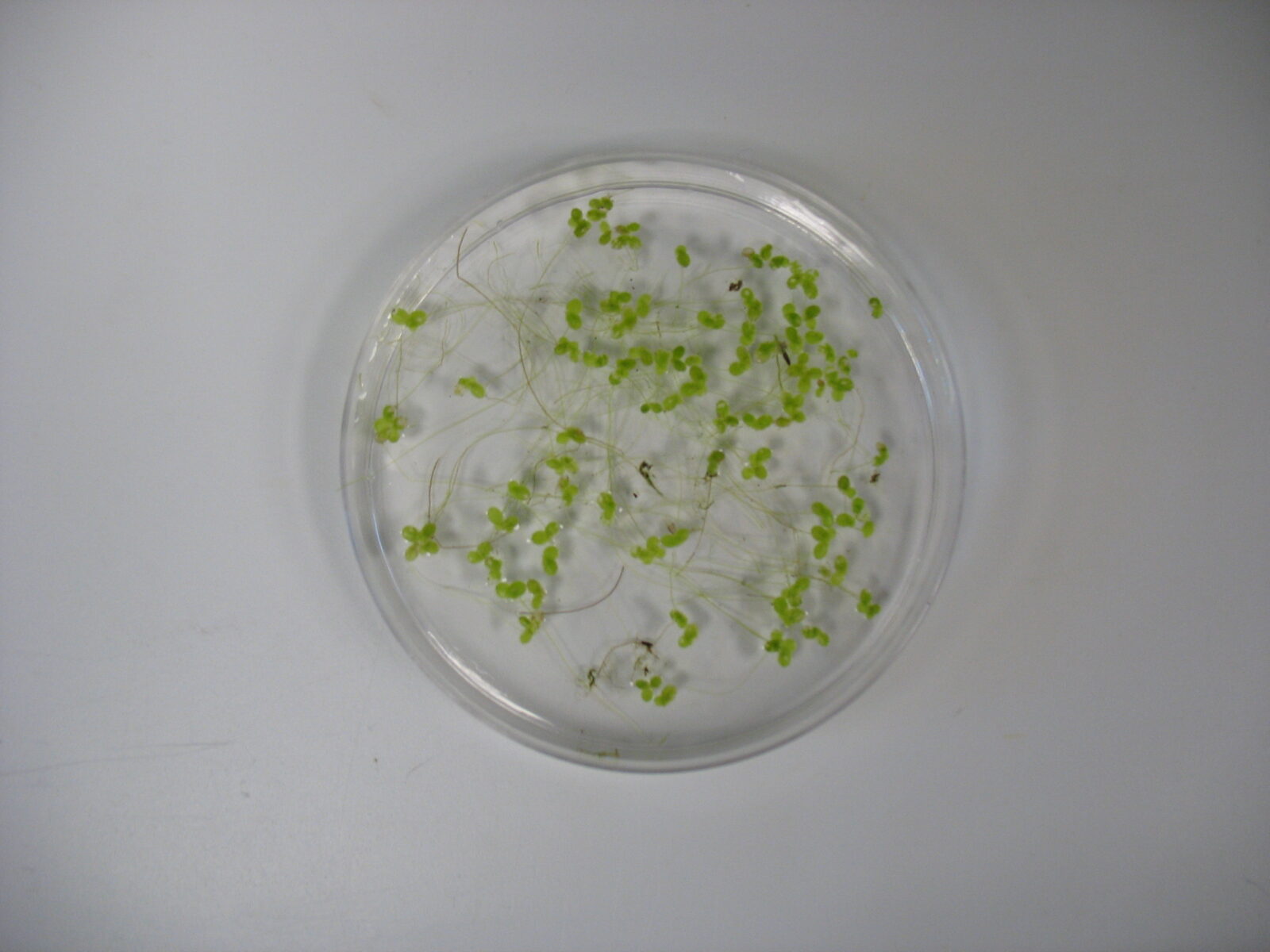
What is Small Duckweed?
Small duckweed or Lemna Valdiviana consists of thin roots with a single small leaf floating on the surface. They are found in still, sluggish water in large floating mat formations.
- Appearance: Small duckweed consists of floating, oval-shaped leaves anchored by a single root and clustered together. They are about 0.1 inches long and 0.05 inches wide in a light green color.
- Native?: While small duckweed is native to Florida, it can grow quickly, covering the surface of a waterbody. This may result in oxygen depletion, fish kills, and other negative effects if left unchecked.
- How to Control Small Duckweed: When it comes to this Floridian aquatic plant, there are quite a few options. In addition to aquatic herbicide applications, stocking fish such as koi or goldfish to eat the plants can help.
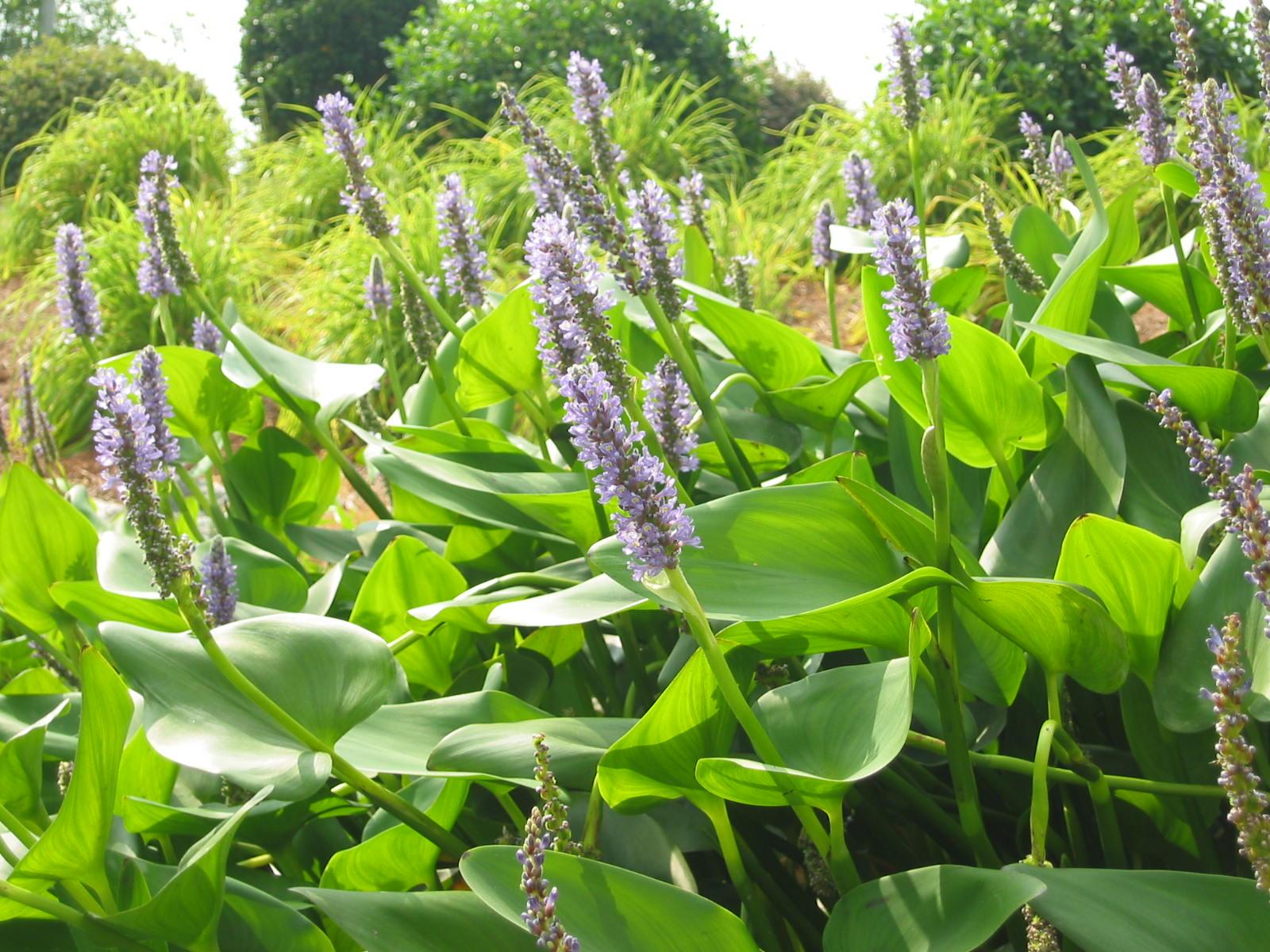
What is Pickerelweed?
Pickerelweed or Pontederia cordata is a native Floridian plant marked by vibrant purple flowers atop bright green stalks and sheaths. It can be found in and around the shores of slow waters, such as marshes, canals, and swamps, growing in large colonies and spreading via underground rhizome systems. It is mainly found in South Florida.
- Appearance: Pickerelweed is a medium-sized aquatic plant, which reaches about two to four feet in height. It has long, narrow leaves that can vary in size and shape, but is distinguished by a crowning, half-foot spike covered in hundreds of small, purple and blue flowers.
- Hyper-Local: While Pickerel weed is found in nearly every county within Florida, it’s also found in eastern and central North America, Mexico, the Caribbean, and South America. Pickerel Weed is considered an invasive pest in South Africa where it crowds out native plants.
- How to Control Pickerel Weed: While pickerel weed doesn’t usually require much management due to its numerous benefits for erosion control and nutrient absorption, the primary management option for this aquatic plant is via EPA-registered herbicides.
Discover Invasive Aquatic Plants in Florida:
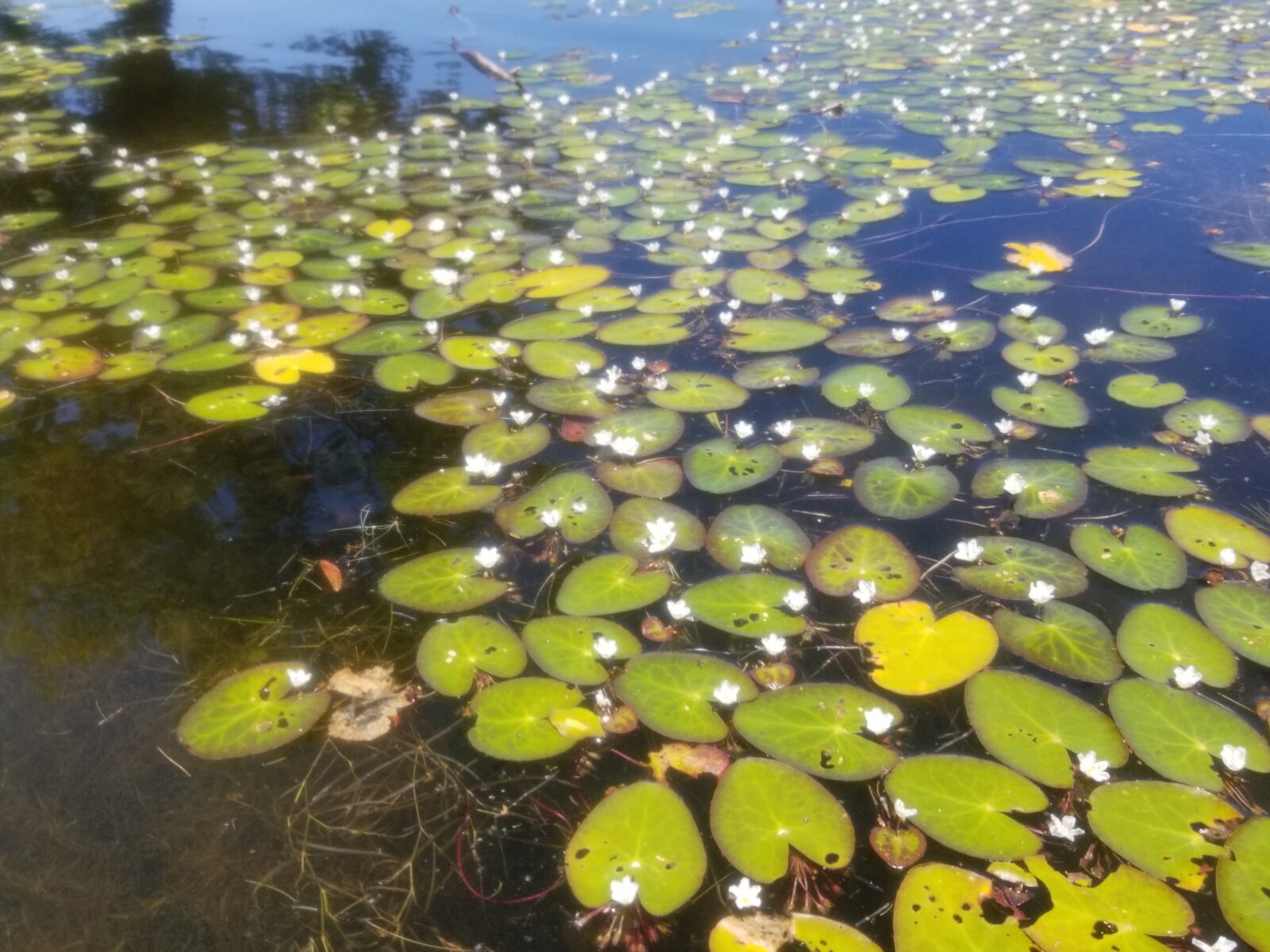
What is Crested Floating Heart?
Crested floating heart or Nymphoides cristata is found floating in freshwater. It usually has runners that are rooted in the ground layer of the waterbody but can occasionally be found free-floating when the roots become unearthed.
- Appearance: Crested floating heart consists of large, flat, floating, heart-shaped leaves with purple bottoms. They are anchored by roots and topped with white flowers with yellow buds.
- Restorative: Crested floating heart is an invasive species, originally brought to the United States for ornamental purposes. It grows quickly, covering surfaces, depleting oxygen and crowding out other plants. It usually spreads via the movement of boats and anchors.
- How to Control Crested Floating Heart: Try to control or prevent the spread of this invasive species by making sure boats entering the waterbody are clean, dry, and drained. While most physical methods of removal only serve to further spread its numerous ribosomes and seeds, highly-targeted herbicides have shown some promise in treating this plant.
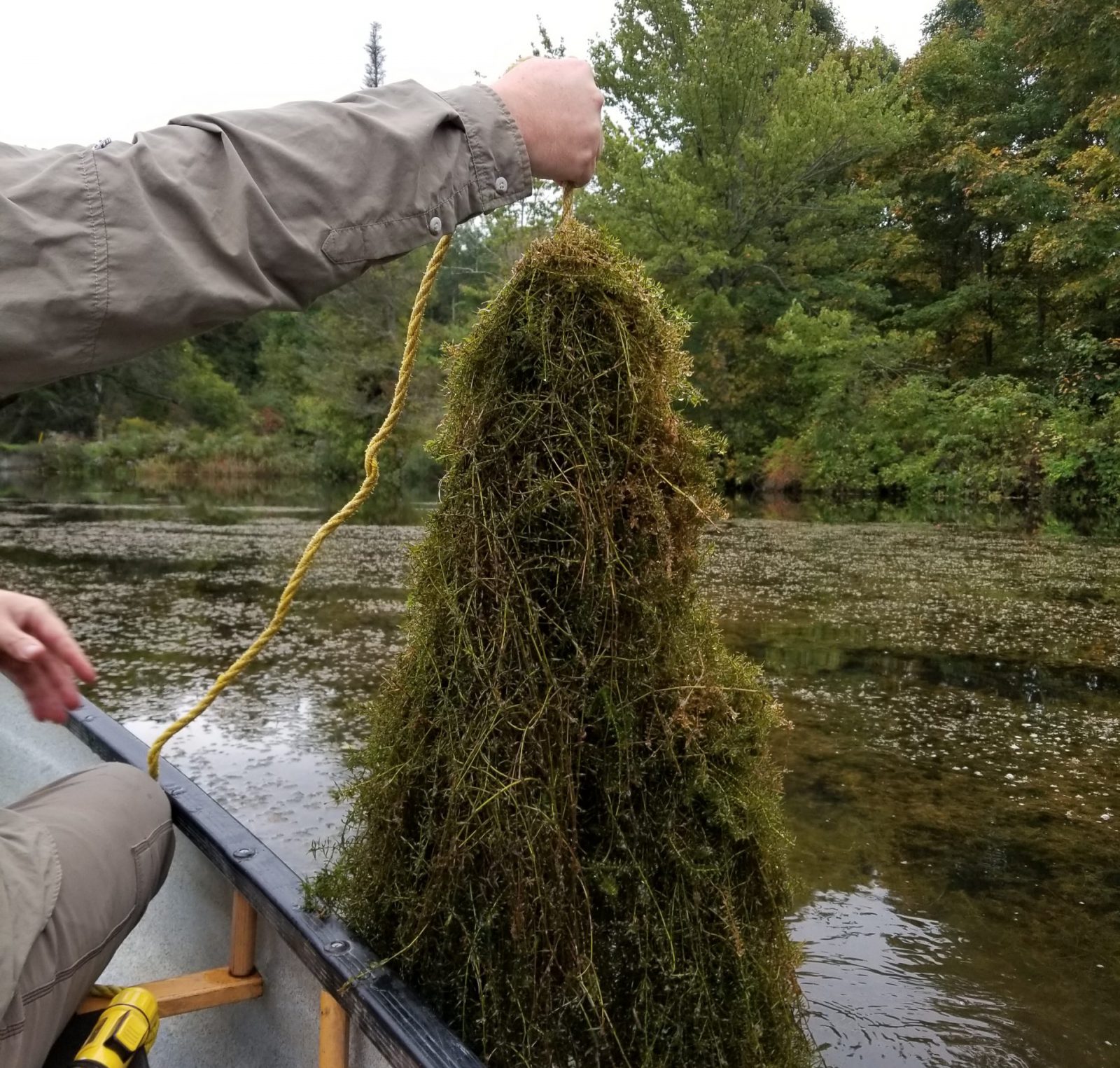
What is Hydrilla?
Hydrilla or Hydrilla verticillata is a fully submerged, perennial aquatic plant species that is infamous for being one of the most pervasive exotic plants. In fact, Hydrilla has made its way into nearly every type of freshwater, including rivers, lakes, streams, ponds, canals, ditches, reservoirs, and more.
- Appearance: Hydrilla consists of thicker stems covered in small, bright-green leaves that come to a point with serrated edges. It also has what is best described as a sharp tooth under the center of each leaf. These leaves are arranged in whorls of about five leaves directly attached to the stem. At the end of each stem, which can reach up to thirty feet, is a tuber. hydrilla is usually found in vast quantities, forming thick mats. It can survive both embedded in the ground, as well as free-floating.
- Named for Hydra: Part of what makes hydrilla so tricky is its capability to grow a new plant from just a small stem piece – similar to the mythical nine-headed serpent in Greek mythology.
- How to Control Hydrilla: There are a lot of options when it comes to controlling Hydrilla, but few of them are successful in the long term. Physical raking and suction harvesting, biological controls such as tuber-feeding weevils and grass carp, as well as targeted herbicide applications. Due to the rapid growth hydrilla is capable of, it’s best to work with professionals who are highly knowledgeable and experienced in managing it.
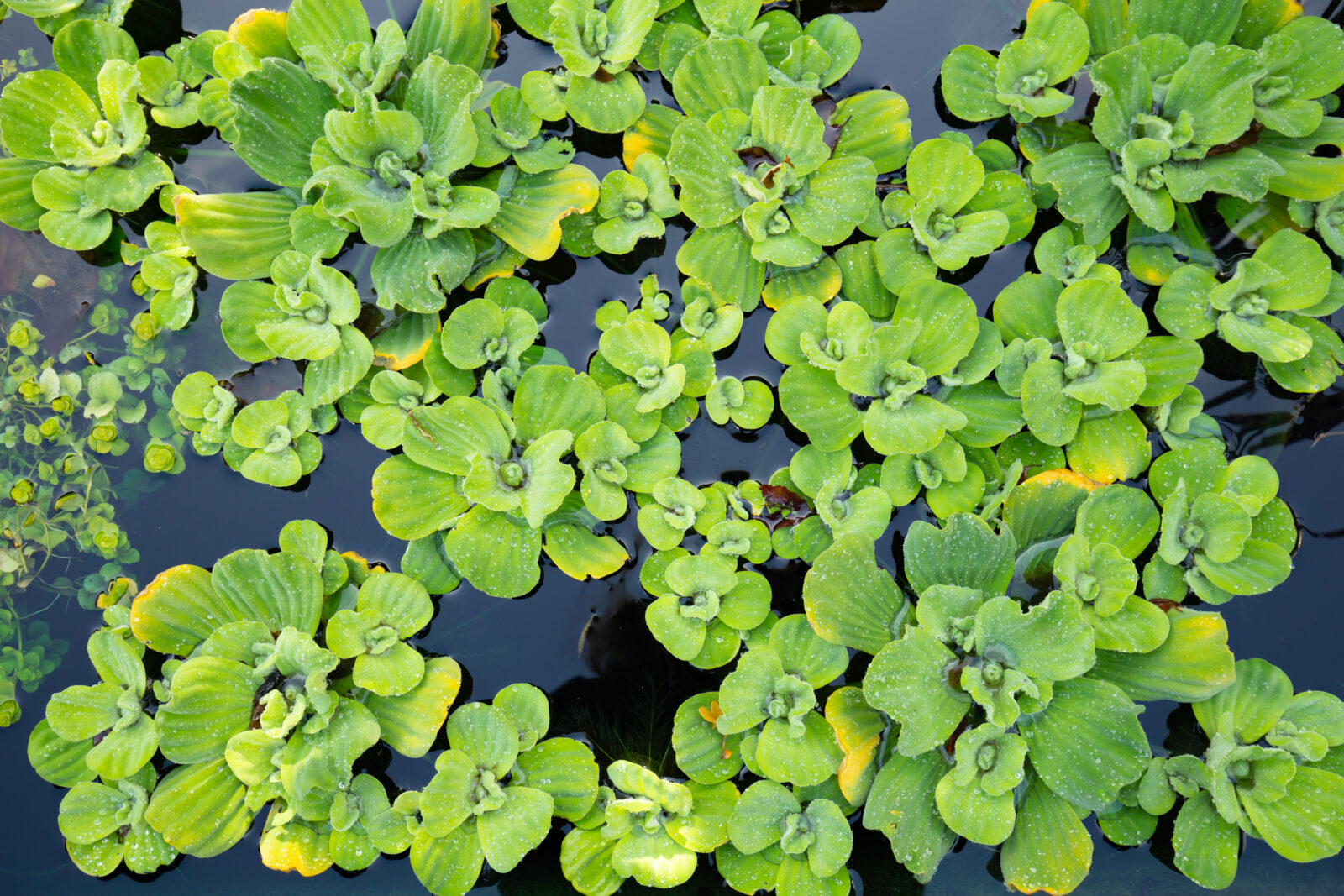
What is Water Lettuce?
Water lettuce or Pistia stratiotes is a free-floating emergent plant that was first reported in Florida in 1765, although some experts disagree as to whether it is native to the United States.
- Appearance: Water lettuce resembles a light green head of actual lettuce cut in half, with thick, velvety leaves that are rounded and ridged at their ends. It also has small white to pale green flowers and feathery roots dangling underneath it into the water.
- An Aggressive Invasive: Water lettuce is a perennial plant, which lends itself to creating thick, semi-permanent mats that block off sunlight and decrease dissolved oxygen levels. This not only degrades water quality, but inhibits beneficial submerged plants, recreation, and native wildlife.
- How to Control Water Lettuce: Water lettuce should be controlled to ensure that it does not cover or inhibit pond or canal surfaces and drains. This can be done via raking, skimming, or approved herbicides applied by a professional.
Manage Unwanted Plants with Annual Management
Though herbicides are highly effective and safe for managing invasive aquatic weeds, they are not a long-term solution – they don’t resolve the root causes of the problem. Professionals may recommend kicking off an annual program with herbicide applications to begin with a “clean slate,” but these efforts are followed by consistent monitoring and sustainable management solutions to prevent regrowth.
Depending on the species, a multi-layered approach may be necessary. Aquatic plants with tubers and seeds can take several years to establish full control. Experienced professionals can work with you to identify the types of invasive plants in your waterbodies and guide you in choosing the right management path based on your unique needs.
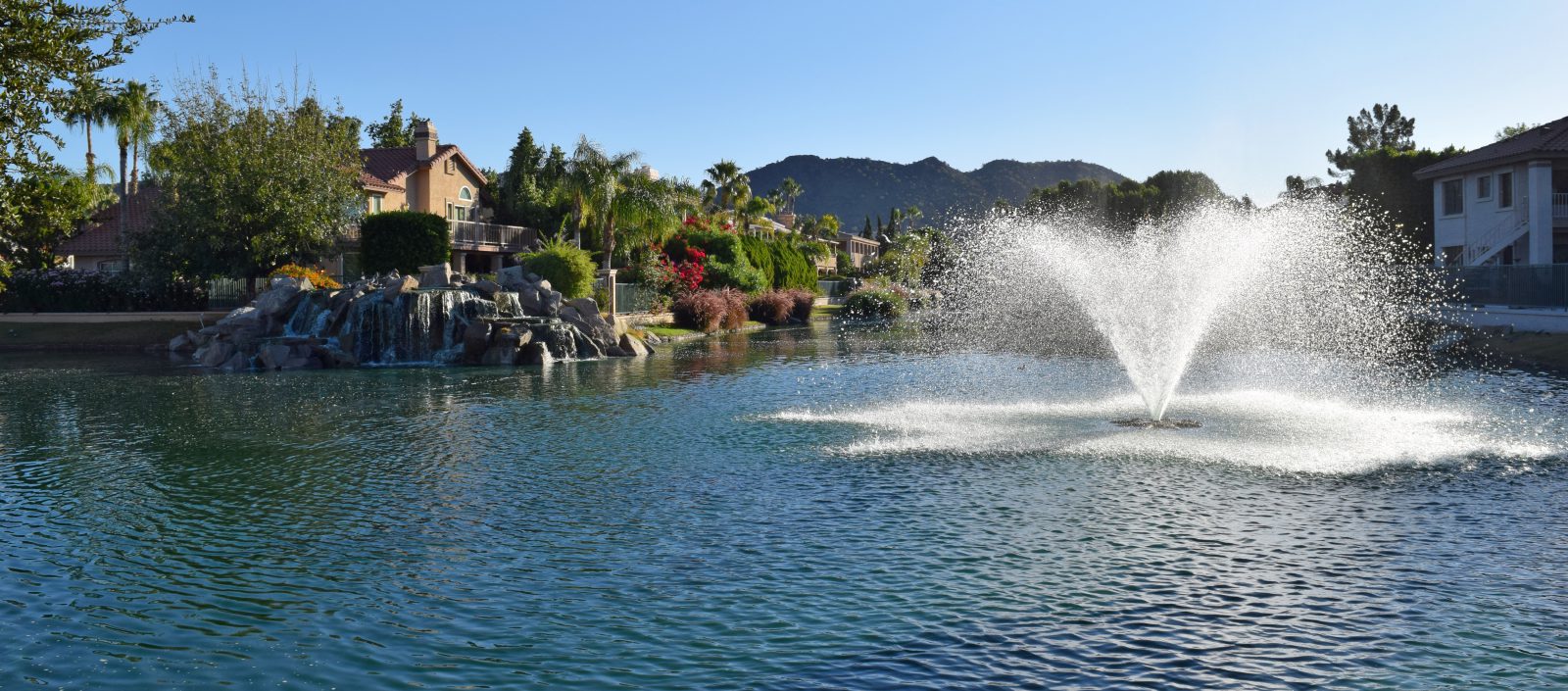
Maintain Beautiful Water with Proactive Solutions
No matter your situation, budget, and goals, an annual management plan is often the most effective, long-lasting, and cost-effective approach over time. Rather than treating invasive species after they get out of hand, professionals use a wide array of tools and equipment at their disposal to prevent or eliminate growth as soon as it’s discovered through diligent monitoring. Solutions that help improve water quality may include nutrient remediation, beneficial bacteria applications, fountains and aerators, shoreline management and restoration, as well as mechanical solutions like mechanical harvesting and hydro-raking as needed.
You care about your aquatic resources, and we do too. As you work to cultivate beautiful, balanced water, make sure to partner with professionals that understand your objectives and have a shared vision for the future of your waterbodies.
Manage Invasive Weeds & Unwanted Algae
Contact Us to Manage Nuisance Plants
Call us at 888-480-5253 or complete the form below to connect with an aquatic management expert.
SOLitude Lake Management is a nationwide environmental firm committed to providing sustainable solutions that improve water quality, enhance beauty and preserve natural resources.
SOLitude’s team of aquatic scientists specializes in the development and execution of customized lake, stormwater pond, wetland and fisheries management programs. Services include water quality testing and restoration, algae and aquatic weed control, installation and maintenance of fountains and aeration systems, shoreline erosion control, muck and sediment removal and invasive species management. SOLitude partners with homeowners associations, golf courses, private landowners, businesses and municipalities. SOLitude Lake Management is part of Rentokil, a leading business services company, operating across the United States, Canada and Puerto Rico.
For more information, visit SOLitude Lake Management at solitudelakemanagement.com, and connect on Facebook, LinkedIn and Twitter.









